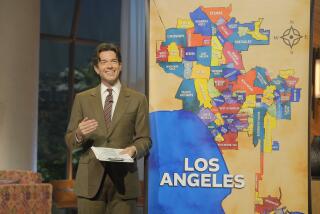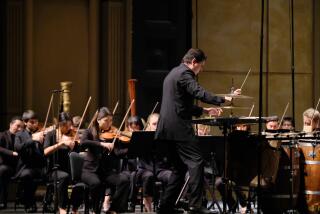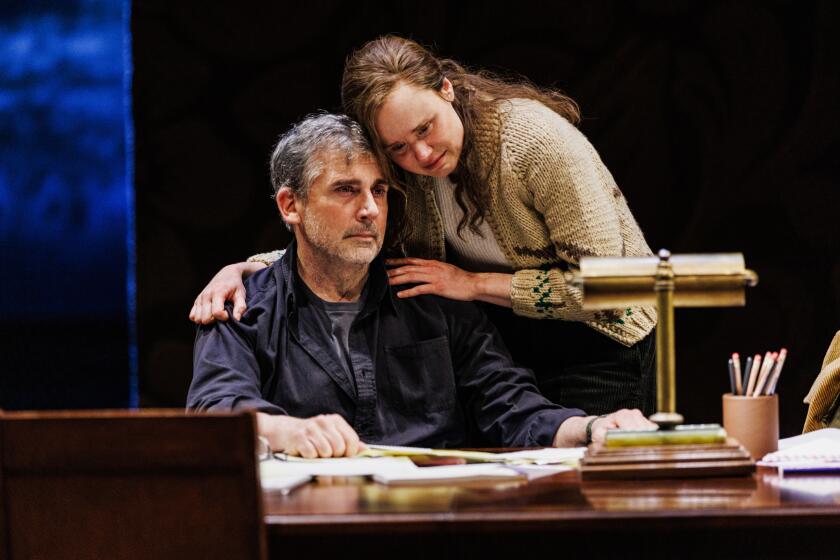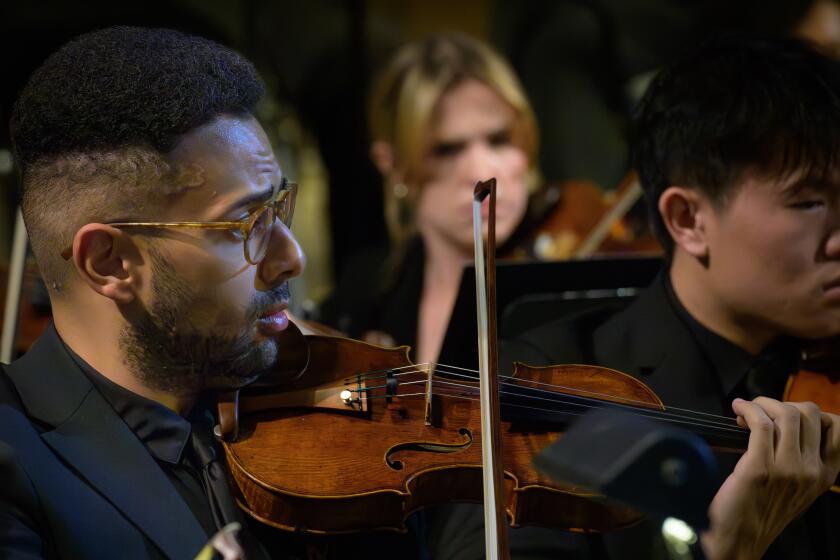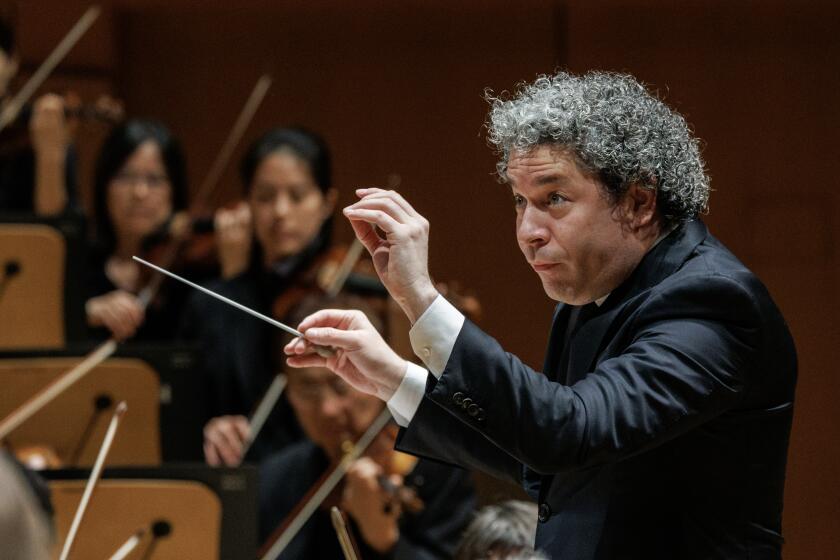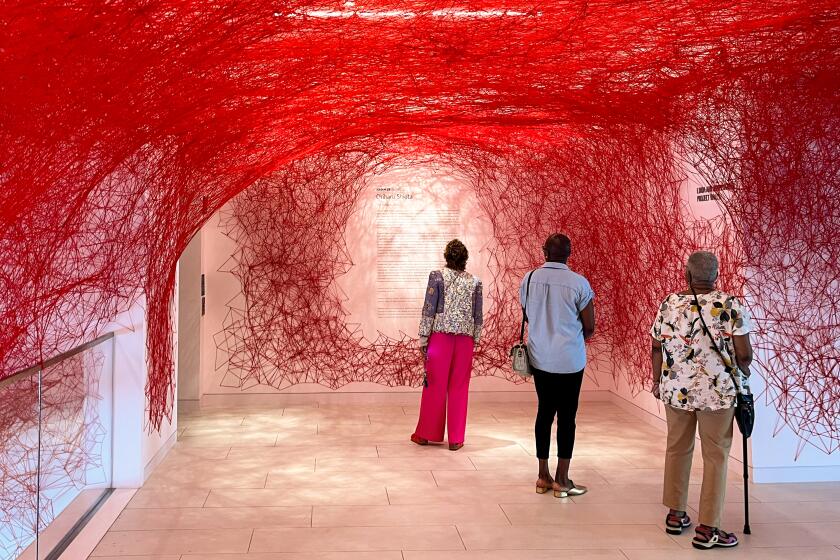A Cartoon Summit in S.F.
Laughter may be universal, but “The U.S.S.R.-U.S.A. Cartoon Exchange,” a glasnost- style exhibit of 200 drawings at the San Francisco Arts Commission Gallery, reveals differences in humorous style and content more striking than any common ground.
Joel and Diane Schatz, who operate a private telecommunications system between the two countries, worked with Andrei Konstantinov of the newspaper Komsomolskaya Pravda and curators Dennis Gallagher and Victor Moscoso to assemble an overview of the work of 67 Soviet cartoonists and 45 Americans from the Bay Area.
The artists in both groups try to provoke laughter, but they go about it differently. The Americans stress personal expression through individual graphic styles; the Soviet works have a more generic look, with either simple outlines or dark, elaborate crosshatching. The Americans’ multi-panel, narrative strips and verbal punch lines show the influence of newspaper strips, comic books and stand-up comedians. The Soviets’ single-panel, captionless drawings reflect the traditions of European magazine cartoons and editorial illustrations.
A few of the Russian works would look right at home in the New Yorker or Playboy--Santa Claus using a microscope and an eyedropper to distribute gifts to paramecium, or Pinocchio delivering Hamlet’s soliloquy to a pine cone. But an aura of state-approved propriety permeates many of these drawings. The artists seem to be playing it safe, like a Vegas comedian facing an audience of fundamentalists.
The better Soviet cartoons are notable for striking political overtones. Don Quixote peers through the bars of a prison shaped like a windmill. A bureaucrat sits in a chair that has been cut out to accommodate his long, spiked tail. In the most striking single image in the exhibit, Igor Kopelnitski depicts the world as the body of a forlorn dinosaur struggling against a blizzard.
Animators in many Eastern European countries enjoy greater artistic freedom than live-action film makers. These drawings suggest that Soviet cartoonists may escape some of the official strictures imposed on painters, authors and other “serious” artists.
Because the U.S. portion of the exhibit is limited to Bay Area artists, the selection is erratic and doesn’t represent the best in American cartooning. A Sunday panel from Charles Schulz’s “Peanuts,” a lush watercolor by magazine cartoonist Eldon Dedini and sharp political cartoon by Wiley would be standouts in any exhibit of cartoon art. But Phil Frank’s amateurish caricatures and Morrie Turner’s smarmy “Wee Pals” strips don’t even approach that level of humor or graphic sophistication.
As the exhibit demonstrates, San Francisco remains a haven for some of the hippest cartoonists in the country, including Bill Griffith, R. Crumb, Trina Robbins and Futzie Nutzle. It’s difficult to imagine Soviet audiences following the references to American popular culture in Griffith’s “Zippy” Sunday panel, or appreciating the counterculture roots of Crumb’s gritty “comix” cover.
A live computer/phone link between the San Francisco gallery and the Moscow offices of Komsomolskaya Pravda was set up Feb. 19. The phone connection was decidedly spotty, but a computer transmitted individual video frames, enabling the 50 or so participants in each city to see each other on monitors.
Everyone wanted to say something nice and make a small contribution to glasnost , but no one knew what to say. Only a few people at the gallery had met the Soviet artists, and the conversations bore a curious resemblance to the stilted calls that distant relatives exchange at Thanksgiving.
No mention was made of the problems of censorship or stereotypic portrayals of the rival superpowers and ethnic minorities. The few significant issues that came up were tactfully ignored--no one even tried to answer when Trina Robbins asked why the Soviets had included the work of only one woman cartoonist. Both sides preferred a small-talk-across-the-water approach: “Gee, is it really snowing there?” “Now Joe wants to say ‘hi.’ Here he is.”
The exhibit will travel to other U.S. cities (negotiations are under way to bring it to Los Angeles) and the sponsors hope to add cartoons from artists in each region. (Examples of the best American cartoons--”Calvin and Hobbes,” “Doonesbury” and “The Far Side” would help upgrade and balance the show.) The exhibit will then tour six major Soviet cities.
“The U.S.S.R.-U.S.A. Cartoon Exchange” continues through March 12 at the San Francisco Arts Commission Gallery, 155 Grove St. Information: (415) 558-4445.
More to Read
The biggest entertainment stories
Get our big stories about Hollywood, film, television, music, arts, culture and more right in your inbox as soon as they publish.
You may occasionally receive promotional content from the Los Angeles Times.
